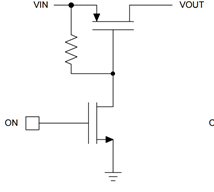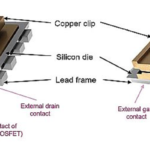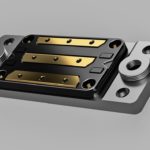Load switches are used to enable/disable power to selected ICs or circuit subsections. Although they don’t get much attention, they are useful for both saving power as well as management of multiple power rails. This FAQ will discuss their function, basic design, advanced IC implementations, and additional benefits of IC load switches.
Q: What is a load switch?
A: Simply, it’s an electronic switch used for controlling the power of a DC rail to an IC, group of ICs, or subcircuit of a system. The load switches of this FAQ intended for modest voltage and current levels, up to tens of volts and about 10 amps (although there are some for much higher voltage/current ratings) and so can be fabricated as standard ICs with integral MOSFETs.
Q: Why do you even need a load switch? Don’t most ICs have a hardware pin or software control for forcing them into low-power, idle, quiescent or sleep modes, with varying degrees of power savings?
A: Yes, most ICs do have that capability, but there are times when you want to save even more power by shutting off an entire subcircuit which also has other components such as resistors, I/O ports, or even discrete transistors (almost every design has a few of those, despite the prevalence of ICs) which may still drain some power. Putting an IC in a quiescent or similar mode shuts down only the IC itself and not the associated circuitry, which includes those other power-dissipating passive devices Also, there are systems with multiple rails where the power-up and power-down sequence of the rails is critical (more on this later) and load switches allow the designer to establish sequencing control.
Q: How do you build a load switch?
A: A basic load switch is relatively easy to build: all it takes is a MOSFET and its MOSFET driver, Figure 1. The MOSFET is configured so the rail current flows from the source to the drain, with the MOSFET gate used to turn the MOSFET on (conducting) or off (non-conducting). Of course, the MOSFET gate must have a suitable driver which can source/sink the needed current at the appropriate voltage to ensure that the MOSFET turns on/off fully and “cleanly.”

Q: Is it a “near-perfect” on/off switch, as a mechanical one would be?
A: No, a load switch is not a perfect replacement for a mechanical switch, but it is close enough for most applications. A mechanical switch has milliohm and even sub-milliohm contact resistance when closed, and near-infinite resistance when open; a load switch typically has tens of millions and several megaohms, respectively. In most cases, the alternative of an electrically activated mechanical switch (also known as a relay) is impractical in terms of size, weight, speed, and cost for an electronic circuit and PC board (although there are relay-based load switches for specialty applications such as managing those high vacuum-tube voltages and currents, which is outside the scope of this FAQ).
Q: What are some of the difficulties when using a “basic” MOSFET for a load switch?
A: First, as noted above, the FET needs a properly sized and designed driver, as the gate of most FETs cannot be driven by a simple low-voltage digital signal as the voltage would be incorrect in many cases, and the current-drive of most digital I/O lines is also inadequate.
Second, the bare MOSFET circuit has no protection against the many things that can adversely affect power rails, such as source and load-side transients, short circuits, and EMI/RFI-induced spikes. Finally, a basic gate drive is a on/off circuit with little control over resultant DC rail rise or fall times and, as such, may turn on/off too quickly or too slowly for the load rails in a given application.
Third, despite its apparent simplicity, even a basic MOSFET and driver require design time to assess design objectives (determine needed specifications, and their minimums and maximums) and ensure the design is reliable with consistent performance over operating conditions of the DC rail voltage and temperature, along with other factors.
Q: What’s the alternative?
A: IC vendors have recognized the need for a “better” load switch, and also understand how a properly designed IC can result in both a better yet easy-to-use load-switch function. This is the subject of Part 2 of this FAQ.
References
- Texas Instruments, SLVA652, “Load Switches: What Are They, Why Do You Need Them And How Do You Choose The Right One?”
- Vishay Intertechnology, Inc, “Smart Load Switches”






Leave a Reply